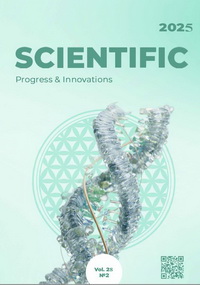Features of enhancement and development of mushroom diseases of alfalfa in the minds of the Eastern Forest-Steppe of Ukraine
DOI:
https://doi.org/10.31210/spi2025.28.02.08Keywords:
perennial herbs, pathogens, prevalence, intensity of development, harmfulness, development restrictionsAbstract
The creation of a powerful fodder base for livestock is impossible without obtaining vegetable fodder proteins, the source of which are perennial leguminous grasses, among which alfalfa is the most important. At this stage of development of the agro-industrial complex of Ukraine, the yield of the crop is low, and the reason for this is the prevalence of alfalfa sowings due to disease buds. In the phytopathogenic complex of alfalfa in the Eastern Forest-Steppe of Ukraine, diseases of fungal etiology prevailed, the prevalence of which ranged from 9.8 to 68.7 %. When alfalfa was affected, depending on the degree of weakness to strength, from 17.4 to 56.2 % of the leaves fell off. Leaves make up 30 % of alfalfa hay. We found that the most widespread and harmful was spotting. Brown spotting of alfalfa was 11.8–42.7 %, and disease development was 7.6–22.5 %. The incubation period was 3–6 days, and the development cycle was 26–30 days, and 2 generations of the pathogen were recorded. Alfalfa was most affected by the yellow spot pathogen at the beginning of budding and flowering of alfalfa in the second half of May. The highest prevalence of the disease was 15.3–32.6 %, and the development of the disease was 11.4–17.8 %. The development of the disease was observed during a change in dry weather with a temperature of +25 0C and a relative humidity of 43%. The incubation period lasted 4–16 days, and the development cycle –12–26 days. The prevalence of downy mildew was 4.8 %, and the development of the disease was 2.6 %. The manifestation of the disease was observed when the air temperature changed above +100 0C and GTK 0.8–1.6 in the growth phase of alfalfa. The pathogen was preserved on fallen leaves in the form of oospores or mycelium. The first signs of rust in alfalfa grass were observed at the end of budding at an air temperature range of +20+22 0C and a relative humidity of 75–80 %. The main source of infection is the Eurotiomycetes. Powdery mildew developed significantly with a disease prevalence of 17.4–29.3 % and an intensity of 13.2–20.1 % at an average daily air temperature of +25+27 0C and an average daily air humidity of 68–75 %.
Downloads
Published
How to Cite
Issue
Section
License
Copyright (c) 2025 Scientific Progress & Innovations

This work is licensed under a Creative Commons Attribution 4.0 International License.

 Creative Commons Attribution 4.0 International Licens
Creative Commons Attribution 4.0 International Licens